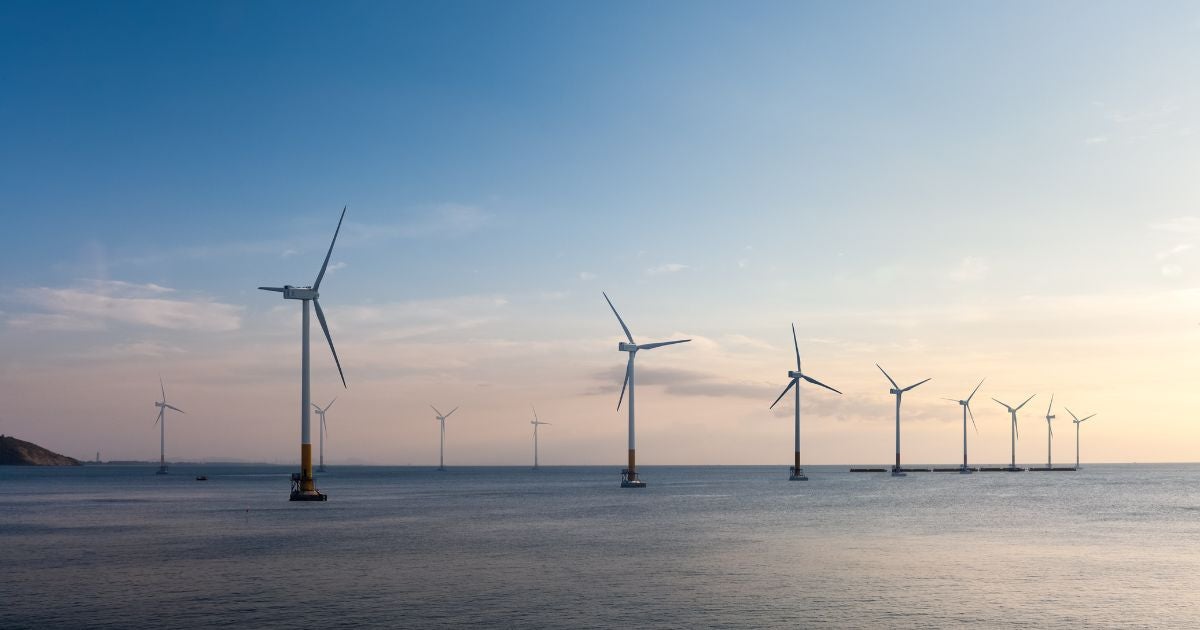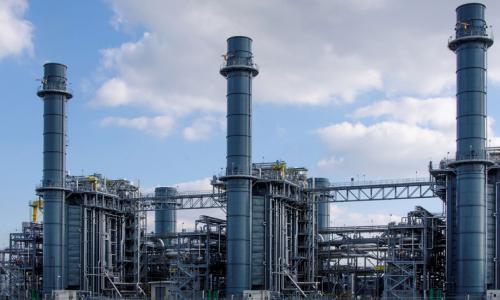
North Carolina Carbon Plan: Duke’s hydrogen plan is a mirage, but there are proven clean technologies available now to meet customer need
On June 17, the Environmental Defense Fund (EDF) was represented by our expert witnesses at a technical conference before the NC Utilities Commission (NCUC). Each of the intervenors in the Carbon Plan/Integrated Resource Plan docket, including EDF, were given a few minutes to briefly summarize testimony filed in May. EDF’s testimony centered around the need for Duke Energy to more aggressively leverage North Carolina’s offshore wind potential — the subject of this recent blog — and the fallacy of Duke’s hydrogen plans.
Duke is projecting increased energy demand by the early 2030s, which may or may not come to fruition. Their filed plans focus heavily on meeting that need with construction of risky and expensive new gas plants. Part and parcel to their enormous investment in new gas power plants is a scheme to transition those plants to burn first 3 percent, then 100 percent hydrogen at some point in the future. The market to supply the volumes of green hydrogen they propose, however, doesn’t currently exist, meaning that — in practice — this theoretical hydrogen is simply wishful justification as they continue to seek approval for their long-running desire to invest more and more in new fossil fuel power plants. But Duke’s plan doesn’t add up — or rather, it only adds up in terms of guaranteeing profits for the company’s shareholders. There’s not much in it for their customers except unnecessary risk, cost, and more pollution.
Fortunately, a wide range of stakeholders, including the NCUC’s Public Staff, are pushing back on Duke. The Public Staff, the state consumer advocate meant to protect ratepayers from monopoly utility boondoggles, recommended in their recent filing that Duke scale back its gas plans and ramp up investment in a variety of clean energy sources. EDF will have an opportunity to engage further on these recommendations during the Commission’s evidentiary hearing beginning on July 22, 2024. After hearing from all the parties, the Utilities Commission will issue a final order by Dec 31, 2024. EDF and other intervenors will be urging the Commission to pump the brakes on Duke’s massive proposed gas investment while accelerating investments in onshore and offshore wind, solar and battery storage, which are all proven, reliable, commercially available technologies with much less risk and uncertainty than Duke’s gas-to-hydrogen gamble.
Reiterating the risk and cost of gas
As I outlined in more detail in the previous blog, the regulatory construct that permits Duke Energy to operate as an electricity monopoly in North Carolina means that the more money Duke spends, the more money Duke makes. They are legally entitled to be fully reimbursed for building plants and power lines, on top of which they pocket a return of about 10 percent as a bonus.
Let me be clear: Duke is simply doing what they are entitled to do as the state’s energy monopoly. But I will also be clear that this structure means that Duke will always be motivated to spend more on new power plants because the more they spend, the more that 10 percent amounts to for company shareholders. And the more that 10 percent amounts to for shareholders, the more customers fork over in our monthly power bills.
While Duke’s proposals for meeting energy demand centers around the biggest ticket items, cost-wise, EDF’s expert witness in the Carbon Plan proceedings showed how North Carolina can bring clean energy resources, especially offshore wind, online more quickly and strategically to meet growing electricity demand in our state.
Hoping for hydrogen isn’t a strategy
In Duke Energy’s plans, they are betting ratepayer dollars that a large new market for hydrogen generated from clean electricity will emerge in the next decade, enabling them to switch their massive new gas investment over to a fuel that doesn’t emit carbon when burned. EDF has serious cost and feasibility concerns around gas-to-hydrogen assumptions, which is why we brought in engineering experts to examine Duke’s claims about building new gas plants on the premise that someday they will run entirely on hydrogen. Here are the key takeaways:
- Lack of supply. There are currently no pipelines to safely supply hydrogen to Duke Energy facilities. If mixed with methane in existing pipelines, hydrogen can cause “embrittlement” in the joints of existing infrastructure. That means increased risk of dangerous leakage and equipment failures if we attempt to “blend” hydrogen into existing gas infrastructure. Hydrogen requires a dedicated new pipeline network and Duke Energy has not pointed to any plans for proposed hydrogen pipelines supplying the Carolinas.
- The second problem with Duke’s plan is hydrogen’s lackluster efficiency. Critics have called using clean electricity to generate hydrogen, “a crime against thermodynamics.” If you use clean energy to create and then burn hydrogen, you spend 50 to 80 percent of the original clean energy in splitting hydrogen out of water and burning that hydrogen to spin a turbine. Simply sending that clean energy directly onto the grid or storing it in batteries is far more efficient and cheaper for ratepayers.
- The third critical problem is that Duke’s plans leave us with no idea what hydrogen will actually cost or where it will come from. In our filed testimony, EDF’s experts point out Duke’s lack of transparency on the cost of pipelines, turbine retrofits and storage. North Carolina has no geologic formations to store hydrogen economically over long time periods, which is ideally intended to be the primary advantage of hydrogen over something like batteries. Above ground storage is problematic, too, as it’s both expensive and prone to leakage.
Duke also doesn’t discuss plans to generate hydrogen itself-even though other intervenors have pushed for at least a hydrogen “pilot” where Duke would use an electrolyzer to split water into hydrogen on site at its proposed new gas turbines on Lake Norman. We can’t bet the state’s energy future on a cheap hydrogen market magically materializing in the next decade, when the fact that the Carolinas were not chosen as one of the nation’s “hydrogen hubs” for accelerated regional infrastructure development just last year. If a clean hydrogen market doesn’t come together as quickly or cheaply as Duke hopes? North Carolina electricity customers are still stuck with 35 years of payments-into the 2060s-on these proposed gas plants, even if those plants have to be turned down by 50% in the 2030s to comply with federal regulations or even shut down completely by 2050 to comply with state emission reduction laws.
Conclusion
There’s a better way. Cleaner, cheaper, safer, renewable energy and battery storage technologies are proven, reliable, and commercially available today. Duke Energy, one of the largest utilities in the country, is capable of executing on this better path — one that will protect North Carolinians from unpredictable fuel costs, avoid a risky ratepayer-funded gamble on hydrogen, and get clean energy online by the same 2030-33 timeframe that Duke currently fills with new gas plants, while avoiding a huge amount of unnecessary and excessive carbon pollution. EDF will continue to advocate for a more affordable clean energy future. You can tell the North Carolina Utilities Commission what you think here.











